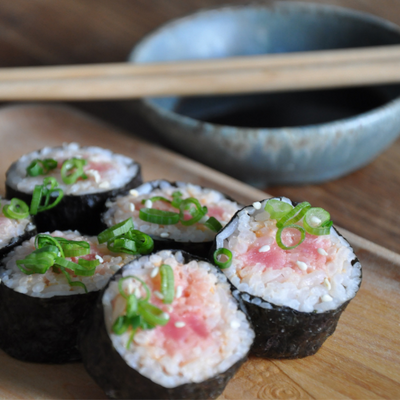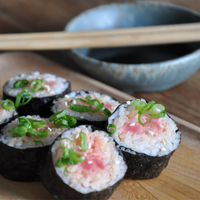Perfect for sushi at home, poke bowls, or seared tuna steaks.
Saku, is a Japanese term to describe sashimi quality seafood cut into blocks. Its rectangular shape is meant for easy portioning in sushi and sashimi applications but is also convenient in seared steaks or tataki format.
Saku blocks of yellowfin tuna thaw quickly and will have a bright red color that deepens with exposure to oxygen. We recommend thawing outside of the bag, on a plate lined with paper towel, and in the fridge for 5 hours or until thawed.
Origin: Vietnam (wild)
Available in 12-14 oz saku blocks, vacuum-packed and super-frozen
SUSHI FAVORITE Try this for sushi or other raw dishes. Want to make rolls at home? Watch this video. Learn more about what makes a fish sushi-grade.
SAFE HANDLING — Keep frozen until ready to use. Remove from packaging and defrost in the refrigerator 8-10 hours before use. Do not defrost at room temperature. Once defrosted, do not refreeze and use within 3 days.












